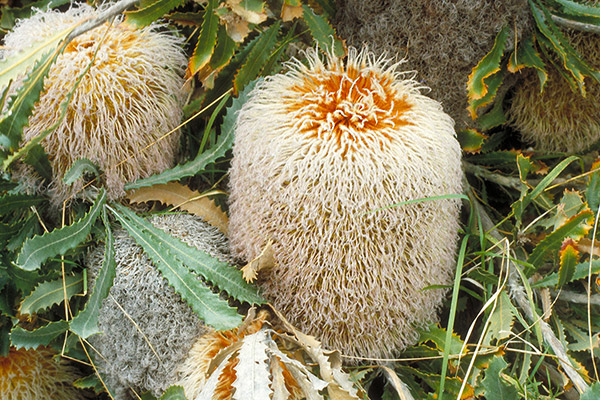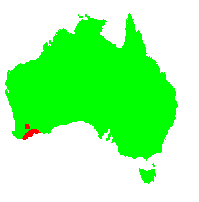General Description:
Banksia baueri is a shrub to about 2 metres high by 3 metres wide with tough, toothed leaves up to 130 mm long. The woolly flower spikes are very large – up to 300 mm or more long by 150 to 200 mm diameter – and the individual flowers are cream to orange with a greyish hairs. Flowering occurs in late winter and spring. The seeds are enclosed in follicles attached to a woody cone and are generally retained within the cone until burnt.
The plant is fire-sensitive in that it does not have a lignotuber for vegetative regeneration after bushfires. The species relies on seed for regeneration.
B.baueri is a popular plant in cultivation because of its moderate size and the unusual, large flower spikes. Although native to a summer dry climate, the species has been successfully grown to the flowering stage in more humid areas on the east coast. It requires well drained soils in full sun to light shade and tolerates at least moderate frost. Like all banksias, it is excellent for attracting honey eating birds.
Propagation from seed is reliable and cuttings may succeed but may be slow to strike. The success rate for cuttings is usually low.

Banksia baueri
Photo: Brian Walters
 Australian Native Plants Society (Australia)
Australian Native Plants Society (Australia)













